
Abu Sayyaf, officially known by the Islamic State as the Islamic State – East Asia Province, is a Jihadist militant and pirate group that follows the Wahhabi doctrine of Sunni Islam. It is based in and around Jolo and Basilan islands in the southwestern part of the Philippines, where for more than four decades, Moro groups have been engaged in an insurgency seeking to make Moro Province independent. The group is considered violent and was responsible for the Philippines' worst terrorist attack, the bombing of MV Superferry 14 in 2004, which killed 116 people. The name of the group is derived from the Arabic abu ; "father of"), and sayyaf. As of June 2021, the group is estimated to have less than 50 members, down from 1,250 in 2000. They use mostly improvised explosive devices, mortars and automatic rifles.
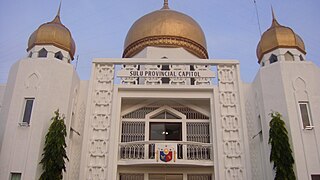
Sulu, officially the Province of Sulu, is a province of the Philippines in the Sulu Archipelago and part of the Bangsamoro Autonomous Region in Muslim Mindanao (BARMM).

Jolo is a volcanic island in the southwest Philippines and the primary island of the province of Sulu, on which the capital of the same name is situated. It is located in the Sulu Archipelago, between Borneo and Mindanao, and has a population of approximately 500,000 people.
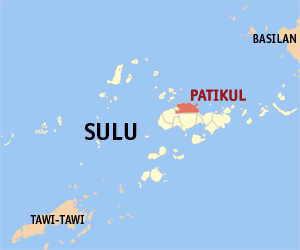
Patikul, officially the Municipality of Patikul, is a 3rd class municipality in the province of Sulu, Philippines. According to the 2020 census, it has a population of 79,564 people.

The Moro conflict is an insurgency in the Mindanao region of the Philippines, which has involved multiple armed groups, and has been ongoing since March 1968. Peace deals have been signed between the Philippine government and two major armed groups, the Moro National Liberation Front (MNLF) and the Moro Islamic Liberation Front (MILF), but other smaller armed groups continue to exist.
Jovito Salvaña Palparan Jr. is a retired Army general, former politician, and a convicted criminal. From July 2003 to July 2004, he was the commander of the Philippine Humanitarian Contingent in the Iraq War. He also served as a Congressman representing the Bantay party-list group in the 14th Congress of the Philippines.

Bangsamoro, officially the Bangsamoro Autonomous Region in Muslim Mindanao, is an autonomous region in the Philippines, located in the southwestern portion of the island of Mindanao.

Emmanuel Trinidad Bautista is a Filipino general who served as the 44th Chief of Staff of the Armed Forces of the Philippines as he succeeded Gen. Jessie Dellosa as AFP Chief. He served as the Executive Director of the Cabinet Cluster on Security, Justice, and Peace at the Office of the President, Malacañang. His appointment as Undersecretary at the Office of the President was from 1 September 2014 to 22 June 2020 shortly after retirement from the military service as Chief of Staff, Armed Forces of the Philippines. Concurrently, he headed the National Task Force on the Whole of Nation Initiative and was also the executive Director of the National Task Force on the West Philippine Sea. He was succeeded by Gregorio Pio Catapang as AFP chief.
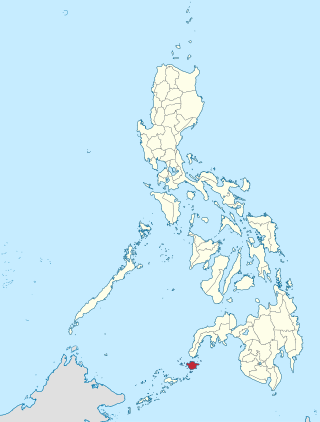
Battle of Basilan was a military offensive launched by the Philippine military to apprehend two lead commanders in the Abu Sayyaf Islamic militia wanted for corruption, money laundering, and terrorism related charges. The main cause of the operation was Sayyaf leader Indama and his followers threatening and attempting to extort money from a circumferential road network. The two-day offensive ended with both suspects evading capture and the island of Basilan falling under government authority. Both the army and MNLF collaborated in fighting alongside for a duration of the operation the first such instance since a truce. However collaborators within the Sayyaf militia included members of the MNLF who sympathized with their cause or had public relations with some of the militants.
The battle of Jolo, also referred to as the burning of Jolo or the siege of Jolo, was a military confrontation between the Moro National Liberation Front (MNLF) and the government of the Philippines in February 1974 in the municipality of Jolo, in the southern Philippines.
The following is a list of attacks which have been carried out by Abu Sayyaf, a militant group based in and around Jolo and Basilan islands in the southwestern part of the Philippines, where for more than four decades, Moro groups have been engaged in an insurgency for an independent province in the country.
The Pata Island massacre refers to an event that took place on February 12, 1981, on Pata Island, Sulu province in the Philippines. More than 100 Philippine Army officers and men were killed by Moro natives in what was called by retired Major General Delfin Castro as "the biggest number of casualties incurred by the Armed Forces of the Philippines in a single incident since the start of the conflict in Mindanao and had the dubious distinction of achieving the biggest losses in AFP firearms and equipment in a single incident." An estimated 3,000 Tausug civilians, including women and children, were killed in months of shelling by military forces in 1982 and was tagged as the Pata Island massacre.

The 1976 Tripoli Agreement was signed on December 23, 1976 in Tripoli, Libya by Carmelo Z. Barbero, representing the Government of the Philippines and Nur Misuari of the Moro National Liberation Front. The agreement defined autonomous administrative divisions for Muslims in the southern Philippines, the establishment of an autonomous government, judicial system for Sharia law and special security forces, and the observance of a ceasefire. The autonomous region was to have its own economic system, including an Islamic bank.

The 2001 rebellion of the Moro National Liberation Front Misuari faction against the Philippine government during the presidency of Gloria Macapagal Arroyo was led by Nur Misuari, the founder of the Moro National Liberation Front (MNLF). It began on November 19, 2001 when members of a faction of the MNLF loyal to Misuari attacked a Philippine Army headquarters in Jolo, Sulu in the Philippines. The attack was meant to disrupt the Autonomous Region in Muslim Mindanao elections scheduled for November 26 of that year, which eventually replaced Misuari as governor.
This is a chronology of the Moro conflict, an ongoing armed conflict in the southern Philippines between jihadist groups such as the Abu Sayyaf Group, the Maute Group, Jemaah Islamiyah, and Islamic State affiliates, mainstream separatist groups such as the Moro Islamic Liberation Front (MILF), the Moro National Liberation Front (MNLF) and the Bangsamoro Islamic Freedom Fighters (BIFF), and the Philippine Government since 1971. Much of the fighting has been concentrated on the island of Mindanao and the Sulu archipelago, with spillover incidents and attacks occurring in the Philippine capital Manila and neighboring countries such as Malaysia.
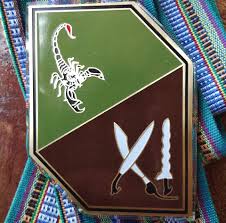
The 11th Infantry Division, Philippine Army, also called the Alakdan Division, is one of the Philippine Army's infantry units in Mindanao. Currently still forming, the Division is expected to complete its equipment and manpower requirements by 2022. It is the youngest of all the infantry divisions of the Army and will have 4,500 troops when fully formed.

In the morning of January 27, 2019, two bombs exploded at the Roman Catholic Cathedral of Our Lady of Mount Carmel in Jolo, Sulu, Philippines. Twenty people were killed and 102 others injured. The bombings took place a week after the autonomy plebiscite held on January 21 for the creation of Bangsamoro. It is believed that the attacks were carried out by the Abu Sayyaf, and the Islamic State claimed responsibility. President Rodrigo Duterte responded by issuing an "all-out war" directive against the Abu Sayyaf. The bombings were widely condemned by neighboring and distant countries, local and foreign organizations all issuing condemnations and condolences to the victims of the cathedral attack.
Hatib Hajan Sawadjaan was a Filipino militant affiliated with the Abu Sayyaf. He was the leader of the group which has associated itself with the Islamic State of Iraq and the Levant (ISIL) since 2014. On July 6, 2020, Hajan Sawadjaan was severely wounded during an encounter with the government troops in Barangay Bakong, Patikul, Sulu and died from his injuries a few days later. After the encounter with the government troops, he was found and buried by the group of his cousin Mundi Sawadjaan, an Abu Sayyaf sub-leader.
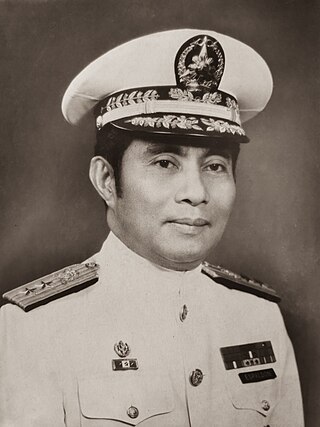
Romulo Mercader Espaldon was a Filipino military officer, civil servant, and diplomat. He was the first naval officer to attain the rank of Rear Admiral in the Philippine Navy. He became overall military commander in Mindanao at the height of the Muslim secessionist movement led by the Moro National Liberation Front (MNLF) in the mid-1970s, during which he promoted a "Policy of Attraction" which won the respect of many Muslims and led 35,411 rebels to return to the fold of law by late 1978, and over 40,000 rebels by the early 1980s.
The 2020 Jolo bombings occurred on August 24, 2020, when insurgents alleged to be jihadists from the Abu Sayyaf group detonated two bombs in Jolo, Sulu, Philippines, killing 14 people and wounding 75 others. The first occurred as Philippine Army personnel were assisting in carrying out COVID-19 humanitarian efforts. The second, a suicide bombing, was carried out near the Our Lady of Mount Carmel Cathedral.













